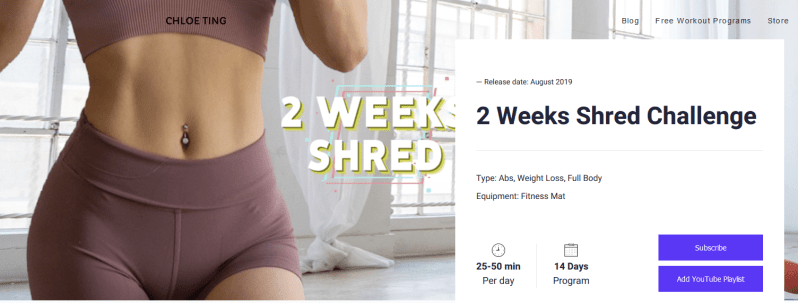With quarantine keeping us confined to our houses and summer break providing a breather from academics, many of us are left with an abundance of leisure. Along with this abnormal amount of free time also comes the pressure to be productive and emerge from the pandemic a better person — perhaps one who has mastered a new language or maybe even improved their culinary skills beyond cooking instant noodles. Especially as summer rolls along, and in spite of many beaches being closed, a common goal for many has been to finally achieve their “body goals.” And what better way to start than with Chloe Ting’s renowned “2 Weeks Shred Challenge”?
My friend and I decided it was time to put an end to our perpetually sedentary lifestyle that had hitherto defined our quarantine experience, and we pledged to complete the workout challenge together. We had seen the numerous progress pictures and Chloe Ting’s own reaction videos to successful results from her challenges. Despite the daunting idea of physical exercise, we were excited to see our own results — after all, it was just suffering for two weeks.
Motivation definitely peaked during the first couple of days. But just over halfway through the program, I was already feeling discouraged as I was seeing no results. I started thinking that a “healthy” lifestyle just wasn’t for me, that working out wasn’t worth my time. Looking back, of course, how could I have seen any results? After just one week of physical exercise for less than an hour every day, it was truly ludicrous to have expected any kind of change. Yet, the very concept of a two-week “shred” program along with the myriad of progress videos and pictures that depicted “success,” whatever that means, gave me the false impression that I should have expected the same, even after just one week.
The truth is, it’s not really feasible to achieve any real, visible change in such a short period of time without a drastic change in diet as well. Progress videos depicted participants completing the workouts, but the majority of them didn’t show the behind-the-scenes of what they ate. I’m no health expert, but I’m willing to bet that those who had the most shocking results also had to undergo major adjustments in their diets. In fact, it’s commonly supported by dietitians that weight loss is roughly 80% diet and only 20% exercise. However, I didn’t see or consider this fact when watching these challenge vlog videos; instead, I was conditioned to believe that the exercise program itself would lead to shocking results. But when I didn’t experience the same change and grew disappointed in myself, I erroneously believed that I was the problem, thereby adopting an unhealthy mindset. What followed was worsened body image and a desire to simply give up exercise, and I fear that for others, the ramifications may spill over to even more serious matters, such as an eating disorder that comes with the pressure to compare to others’ results. Consequently, I felt that a challenge that started out with good intentions could become detrimental in this way.
Ting’s programs were enticing to me because of video titles promoting short-term health goals focused solely on aesthetics, such as “Grow Butt Not Legs” and “Flat Tummy Abs Workout.” Her videos gave me the false hope that body features shunned by society such as the “muffin top” or “love handles” could be (and should be) magically removed within just a few weeks, and I was eager to try it out myself. While there are other similar programs out there, such as Emi Wong’s or Blogilates’, I was especially attracted to Ting’s videos because of the massive attention they have garnered — the two-week ab workout has over 200 million views on its own after not even one year of publication. Because her programs had become trendy, along with her videos reacting to participants’ successful experiences, my friend and I felt compelled to achieve the same results as everyone else by completing the same challenges. Despite the dull repetition, the clever way in which the program was structured kept us clicking on the same videos everyday, constantly bringing in more views and enabling newcomers who see the increasing popularity to participate as well. Ultimately, I was drawn into an endless cycle of being promised change aimed at appearance rather than health, attempting the challenge then feeling disheartened and losing confidence, and finally, luring even more participants in to undergo the same destructive experience. In hindsight, I realized that this is exactly what makes Ting’s business strategy so effective yet detrimental.
I never completed the two week challenge. If I’m being honest, though, I’ve felt happier and healthier ever since. I get in exercise when necessary, maybe even with a single Chloe Ting video, not to pull off some challenge or achieve a certain look, but because I feel lethargic without it. Instead of concerning myself with a short-term, unattainable goal, I focus on achieving long-term physical and mental well-being. While these famed challenges may be an enjoyable and brief addition to the lifestyles of some, I hope participants don’t get caught up in trying to take a shortcut to achieving a desired appearance, instead prioritizing maintaining a sustainable lifestyle that includes salubrious habits and, even more importantly, a wholesome mindset.
Contact Yejin Song at 22yejins ‘at’ students.harker.org.
